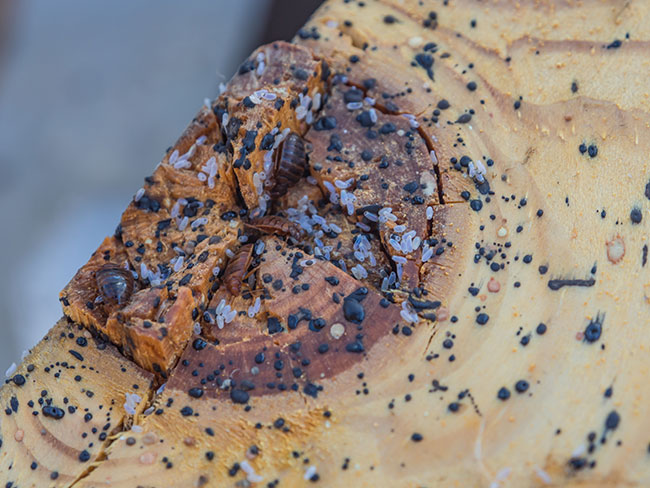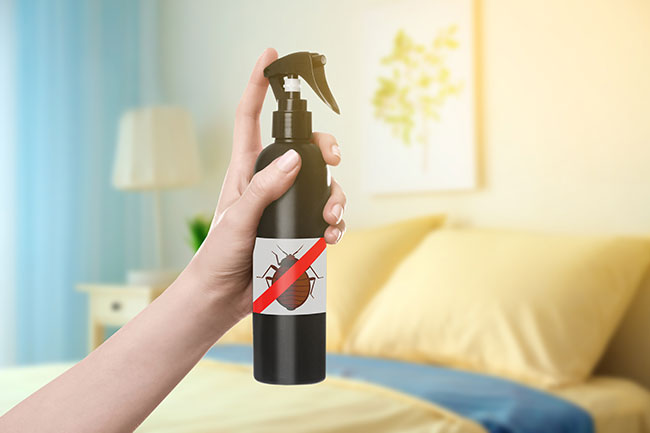Busting Bed Bug Myths

Bed bugs have a bad reputation. Not only do they multiply quickly and can lead to more than a sleepless night, but they also carry a stigma of shame with them everywhere they go. You may be surprised to know that bed bugs aren't picky about where they live and who they bite. In fact, 1 in 5 Americans have had bed bug problems or know someone who has- and they are indiscriminate. Bed bugs don't infest based on cleanliness or a home's condition. You can bring home bed bugs from hotels, the doctor's office, movie theaters, or even from your most recent Uber ride. The key to keeping safe from bed bugs is an understanding and awareness of how they live and move. So, to better protect yourself and your family from these tiny hitchhikers, let's bust some of the most common myths about bed bugs.

Myth #1: Bed bugs only infest dirty rooms.
A bed bug doesn't care when you last showered or how clean your home is. It's a common misconception that where there are bed bugs, there are unsanitary conditions. But old buildings with poor sanitation don't attract bed bugs. Bed bugs are just looking to feed on a warm-blooded human. Bed bugs are "nesting parasites" that hide near where people and pets rest and sleep. So, while they are not attracted to filth or clutter, these both provide a safe and warm place for bed bugs to hide near humans. Bed bugs move from one place to another by hitchhiking on people or their clothing or bags. They easily migrate with you from work to home or from a hotel to the car. Their decision to take up residence in your home has nothing to do with cleanliness.
Myth #2: Bed bugs travel only by hitchhiking on clothes or other fabric.
Bed bugs don't have wings, so they rely on crawling or hitching a ride on clothing, linen, furniture, or luggage. Unlike lice, bed bugs don't travel directly on humans but spread quickly without us knowing. Bed bugs indeed travel on fabrics, but they also crawl through electrical outlets, up through walls, and on pipes. Bed bugs are small, only about one-eighth inch long, so it is easy for them to catch a ride with humans, allowing them to spread much greater distances than crawling alone.
Myth #3 Bed bugs are only found in beds.
Although they most likely got their name from taking refuge in beds and feeding on their human host, bed bugs will hunker down in any dark place that gives them access to their human host. In addition to making their homes in mattresses, you can spot bed bugs in sofas, curtains, headboards, and electrical sockets.

Finance Your Pest Control Needs
Eradicating pests and paying for it can be a challenge, especially when the treatment requires a multistep process as in the case of treating bed bugs. That’s why Bug Tech now offers financing for pest control services to help resolve your pest control challenges while working by your side financially.
Our quick, paperless application process lets you choose from several plans and gives you approval or denial within seconds.
Myth #4: Bed bugs cannot be seen with the naked eye.
While adult bed bugs are only about the size of an apple seed, you can spot them if you know how to identify them. If they have not recently fed, bed bugs will appear long and brown with a flat oval-shaped body. After a good meal (of human blood), bed bugs balloon out and have a more elongated body. Young bed bugs called nymphs are smaller and translucent or whitish-yellow. In addition to identifying bed bugs visually, you can often smell them. Bed bugs produce a "musty-sweetish" odor through glands on the lower side of the body.
Other signs you may have bed bugs include:
- Excrement stains: Bed bugs leave their feces behind after they eat. Thin black streaks left behind on sheets, sofa cushions, or baseboards are a tell-tale sign you have bed bugs.
- Exoskeleton shedding: bed bugs shed their skins at least five times before they mature. Bed bugs leave these sheddings in cracks, under furniture, or anywhere they may be nesting.
- Bloodstains: Bed bugs feed continuously for up to an hour, fully engorging themselves with blood. If you accidentally crush them, the blood can seep out and create a red smudge or stain.

Myth #5 Bed Bugs can make you sick.
Bed bugs are parasites. That means they feed off a host, usually us. But bed bugs do not spread any known disease and are unlikely to make a person physically ill from their bites. However, you can have an allergic reaction to bed bug bites. In most cases, you can soothe redness and itching using medicated creams and antihistamines. Severe reactions, including hives and trouble breathing, call for medical help. But bed bugs also cause psychological illness. The stigma of having bed bugs can create anxiety and even sleep disturbances.
Myth #6: You'll need to throw out everything you own if you have bed bugs.
STOP! You don't have to throw anything away if you have bed bugs. In fact, it's better to treat your furniture and clothing rather than throwing them out, potentially spreading bed bugs in the process. Moving infested beds and furniture can displace bed bugs and eggs, especially if you drag them across the floor or accidentally bang into the wall while moving. We suggest you call on a professional to remove bed bugs. Depending on the severity of the infestation, professionals use chemical treatments or dry heat treatments to attack the problem. Using the same thought process, you can launder items to kill bed bugs. Wash and dry items on the hottest temperatures the fabric can withstand, and be sure to store your bug-free clothes in a sealed bag until you are sure your home is bed bug-free.

Myth #7: Over-the-counter bed bug treatments work.
If you think you have bed bugs, don't panic, don't move furniture, and don't use DIY pesticides. Not only are over-the-counter treatments ineffective, but they can also spread bed bugs further in your home. Getting rid of bed bugs is complex. They are fast and efficient travelers, they hide in more than your bed, and they are expert survivalists. Did you know that bed bugs can go weeks and months without feeding? Bed bugs will adapt and move before they roll over and die. While most pesticides will kill bugs you spray directly, additional bugs that come in contact with treated surfaces are not affected once that pesticide dries. Further, repeated use of pesticides to treat remaining bigs and eggs can cause dangerous chemical exposure for your family.

Myth #8 Once they're gone, they're gone.
Total bed bugs elimination is challenging but not impossible. Bed bugs usually have to be treated several times before you are bed bug-free. Bed Bug treatment is a process, and how long it takes depends on the methods used. In general, bed bugs are pesticide-resistant, making it hard to kill them yourself using traditional pest management methods. Bed bugs also multiply quickly, doubling their population every 16 days or so. Further, bed bugs are good at hiding, leading a secretive life in small cracks and crevices close to their hosts.
Professional pest management companies effectively use a special heat treatment that heats the room or building up to over 120 degrees for several hours. Additionally, a monitoring and ongoing treatment plan may be necessary to prevent future bed bug outbreaks.

